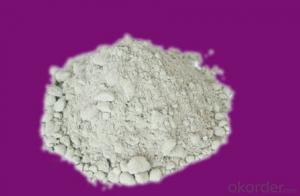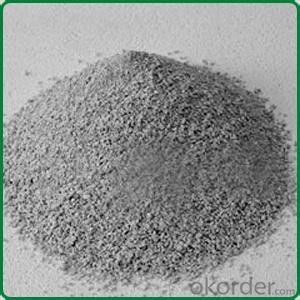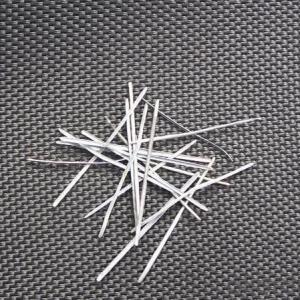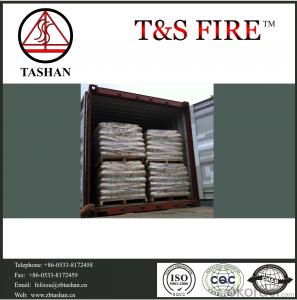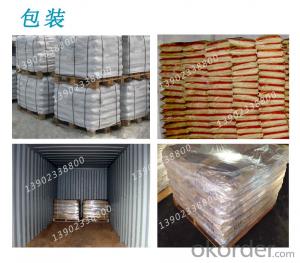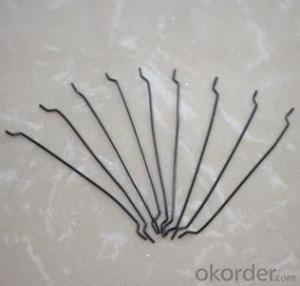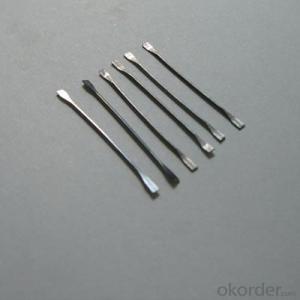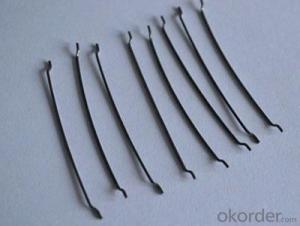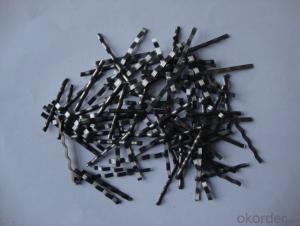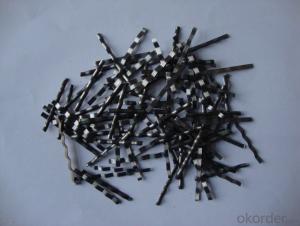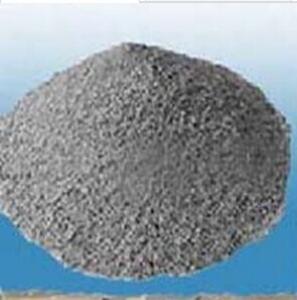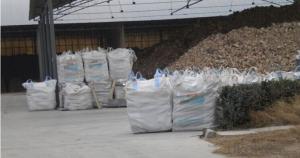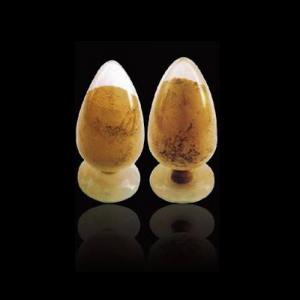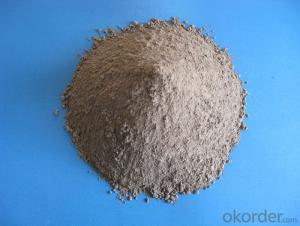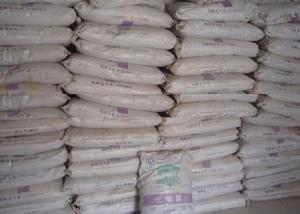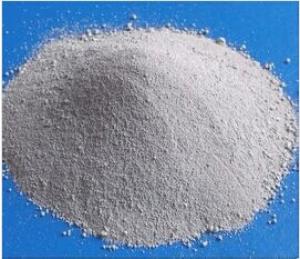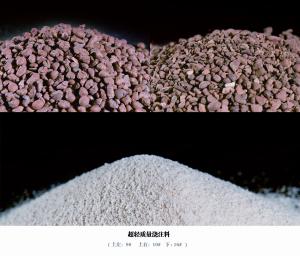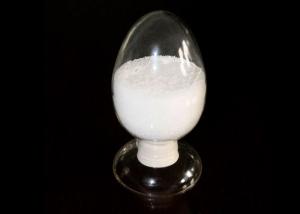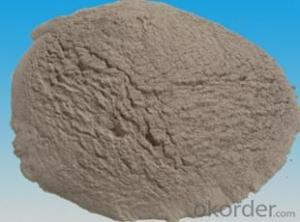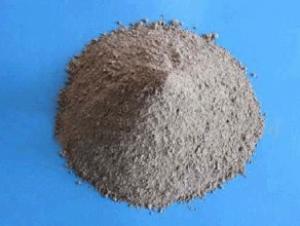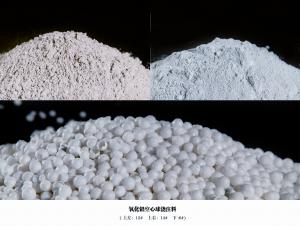Monolithic Refractories for Petrochemical Industry - High Alumina Cement CA50 Refractory Mortar
- Loading Port:
- Qingdao
- Payment Terms:
- TT OR LC
- Min Order Qty:
- 600 m.t.
- Supply Capability:
- 7000 m.t./month
OKorder Service Pledge
OKorder Financial Service
You Might Also Like
Items | Unit | Index | Test standard | ||
Chemical composition | Al2O3 | % | 50 - 60 |
GB/T205-2000 | |
CaO | % | ≥33 | |||
SiO2 | % | ≤8.00 | |||
Fe2O3 | % | ≤2.50 | |||
TiO2 | % | ≤3.00 | |||
Specific Surface Aea | cm3/g | ≥3000 | GB/8074-1987 | ||
Beginning Set | min | ≥30 |
GB201-2000 | ||
Ending Set | h | ≤6 | |||
Bending Strength | 1 day | Mpa | ≥5.50 | ||
3 day | Mpa | ≥6.50 | |||
Compressive Strength | 1 day | Mpa | ≥40.00 | ||
3 day | Mpa | ≥50.00 | |||
Refractories | ≥1350 | ||||
The advantages of the TT61 self-leveling cement is going as follows:
1. Of high fluidity, it can level the floor precisely and automatically;
2. Helps increase compactness, rigidity and isotropy of foundation;
3. Reduces void ratio of foundation and uniforms absorptivity;
4. Quick setting: facing materials can be coated after 1-2 days.
5. Of low contractibility, it can prevent floor cracking.
Bander BksTT61 self-leveling cement is a sort of hydraulic, rigid and inorganic composite material after high-grade compound formulation. It is applicable to leveling up indoor floor before construction of plastic floor, rubber flooring, wood floor, or carpet. Its suitable for concrete, slush screed coat, stony floor tile and other firm ground.
- Q: A brief introduction to the production process of refractory materials? What about the price of unshaped refractory production equipment and refractory refractory production line?
- High temperature oxide materials in refractory special applications, such as aluminum oxide, lanthanum oxide, beryllium oxide, calcium oxide, zirconium oxide, refractory compounds, such as carbides, nitrides, borides, silicides and sulfides; high temperature composite materials, including metal ceramics, high temperature inorganic coatings and fiber reinforced ceramics.
- Q: Where is the development of refractory industry?
- The rapid development of continuous casting technology of its related @ China @4 honing refractories develop and increase in variety and quality, continuous development of refractories for the continuous casting billet continuous casting production and quality have a significant impact. Especially, the completion and operation of Baosteel have greatly promoted the technological progress of refractory materials in China, and the refractory materials for continuous casting have made great progress both in variety and in quality.
- Q: Development trend of refractories
- The foundation of China's refractories industry is still relatively weak, the utilization level of refractory material resources is low, the quality of refractory materials is not high, excess production capacity of ordinary products, the key products of some high-quality high technology content can be produced, but the quality is not stable, and the service life of refractory material consumption compared with foreign advanced level, there is a considerable gap.
- Q: What is the construction method of ladle casting material? Where is the introduction of casting technology for unshaped refractories?
- Supply and demand imbalance, the industry must adjust the strategy, innovation has become a trend, at this point, network marketing strategy has been quietly probe.
- Q: Inorganic refractory materials industry and the glass industry than what?
- The concentration of refractory is not high, the competition is fierce and chaotic
- Q: What are the refractory materials used in metallurgical industry?
- Medium frequency furnace charge, ladle casting material, medium ladle pouring material, stainless steel high temperature heat preservation agent, dry material, magnesia, silicon dry vibration material, chromium silicon drainage agent and tundish seat brick
- Q: Will the prices in the metallurgical industry directly affect the price of refractory materials?
- Hold the risk and adhere to the management concept of "people first and harmony together"
- Q: In industrial lining, which parts have higher requirements on the wear resistance of refractory materials
- In addition, for rotary kiln or similar kiln, refractory material at high temperature has higher abrasion resistance. In the chemical industry such as coke dry quenching device on the discharge port and corbel parts, using silicon carbide brick has good wear resistance.
- Q: Who can help to analyze the domestic refractory market?
- China used clay less than 4000 years ago to burn pottery and to cast bronze. In the Eastern Han Dynasty (AD 25 ~ 220) have been used to make clay refractory kiln firing porcelain material and sagger. In the early twentieth Century, refractory materials were developed towards high purity, high density and ultra high temperature products. At the same time, unshaped refractory materials and high refractory fibers without firing and energy consumption were developed (for 160)Refractory materialIndustrial furnaces above 0 degrees celsius. The former, such as alumina refractory concrete, is often used in large chemical plants, ammonia synthesis plant, two - stage reformer furnace wall, the effect is good. Since 50s, the rapid development of atomic energy and space technology, the development of new energy technology, requires the use of special refractory material of high temperature resistance, corrosion resistance, thermal shock resistance, erosion has excellent properties, such as melting point above 2000 DEG C, oxide refractory compounds and high temperature composite refractory materials.
- Q: Where is the development of refractory industry?
- Continuous casting system varieties used in refractory materials include: (1) ladle refractories -- ladle lining, permanent lining, ventilation components; (2) tundish refractories -- linings and coatings, insulation board, cover; (3) functional refractories -- non oxidation casting with long nozzle, immersion nozzle, stopper, sliding gate; (4) purifying molten steel with ceramic purifier, slag dam, alkaline coating and horizontal continuous casting for separating ring gate, etc..
Send your message to us
Monolithic Refractories for Petrochemical Industry - High Alumina Cement CA50 Refractory Mortar
- Loading Port:
- Qingdao
- Payment Terms:
- TT OR LC
- Min Order Qty:
- 600 m.t.
- Supply Capability:
- 7000 m.t./month
OKorder Service Pledge
OKorder Financial Service
Similar products
Hot products
Hot Searches
Related keywords
